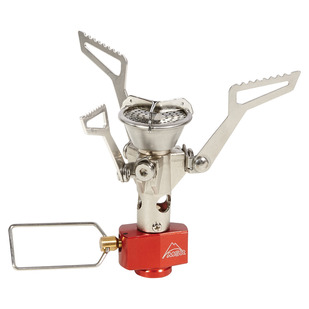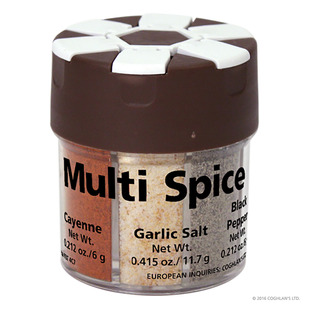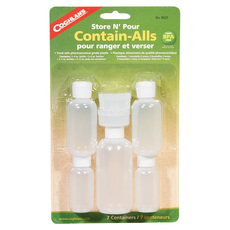Top Tips for eating well when kayaking-camping
By Genevieve O’Gleman, nutritionist, savourer.ca
Naturally I was intimidated, but curious at the same time. I literally dove right in, and got my ocean kayaking certification as I had fallen into the water several times while trying to master the Eskimo roll.
In the end, I absolutely loved it! So much so that recently, I went on an ocean kayaking trip in Panama. Paddling from island to island was fabulous and a true test of my novice level kayaking skills, but also a learning experience where I picked up new ways to stay organized on a kayaking trip.
When you head out on a traditional camping trip, the preparation and planning can be quite overwhelming! Loading the car with all the equipment you need to spend a few days in the great outdoors is surprisingly a bit like playing a game of Tetris.
When you leave on a kayaking-camping trip, with only a few waterproof equipment compartments aboard the kayak, you realize just how valuable space is and that the right equipment really makes all the difference. You can’t take everything! You have to hold back, reflect and weigh it all out. Each item must have a purpose to earn a spot aboard your kayak. The heavier the kayak, the more energy you will need to power it, so it’s really something to think about!
As food accounts for a large part of the weight, I thought I would share my best tips for eating well while on a paddling adventure by letting you in on the equipment and food that I like to bring when preparing my meals in the great outdoors. And, I am sure these tips will also be helpful for all of your camping trips, even if kayaking is not involved. Travelling light is the way to go!
Equipment
Firstly, dry bags. I tested several types and I prefer having a number of small 10 litres bags rather that stuffing everything in one large bag which will be difficult to fit in the waterproof compartments. It’s also much harder to find what you are looking for in a large bag! I choose different coloured bags to easily identify what’s inside plus I use a marker to label the contents, more or less. This way, I put all the food together, then the cooking utensils and the cleaning products...
Next, forget about your big camp stove which will take up too much space. Choose a compact canister stove instead that can fit in the palm of your hand.
Choose compact multipurpose kitchenware and cook set .I also love collapsible bowls and cups they're so practical! They take up so much less space than regular hard-sided bowls and cups. You can also find collapsible kettles and pots And why carry a knife, a fork and a spoon when you can have all three in one handy utensil?
When you start travelling with these super practical items, you can longer live without them. I add a good kitchen knife to this set and protect the blade by placing it between 2 pieces of cardboard taped together to avoid cutting myself or piercing the dry bags. All of this equipment fits in a 20-litre dry bag or two small ones. It’s my portable kitchen! I can cook everything with this handy little kit!
Food
In my kayak ‘pantry’, I have this handy little multi-spice dispenser so I don't have to lug around a spice rack. It has all the basics! I also carry water purification tablets, which save me from using fuel to boil water before drinking it. This way I can save my butane/propane for cooking and I don’t have to carry as many canisters.
At home, before leaving, I prepare non perishable condiments: oil, vinegar, maple syrup, mustard, soya sauce, that I pour into small containers.
I also bring these food items which are nourishing, non-perishable and mostly lightweight:
- Quick cooking oatmeal (quick oats)
- Powdered milk
- Couscous (wheat semolina)
- Dehydrated bouillon cubes
- Textured Vegetable Proteins (TVPs) once rehydrated, they can easily replace ground meat in a sauce, chili or tacos.
- Red lentils (which do not need to be soaked and cook quickly)
- Minute rice (less nutritious than the regular rice I use at home, but cooks so fast that when kayaking it’s worth it)
- A mix of nuts and dried fruit
- Cocoa
- Sugar
- Powdered peanut butter (that you can rehydrate and use as a spread or simply add to a bowl of oatmeal)
- Dehydrated vegetables (a mix for soups)
- Canned tuna (choose an easy-open can, no can opener required)
- Canned legumes (again, easy-open can)
- Biscuits (that I store in a rigid container, so they don’t break)
- Mexican tortillas (which take less space and last longer than bread and can also be eaten sweet or salty)
- Dark chocolate and almond paste (for a good dose of quick energy in case you experience cold or great fatigue)
With these multi-purpose ingredients, I can cook a variety of recipes that take me from morning to evening! I pair different ingredients together. For example, I can mix tuna and couscous with Cajun spices or rice and legumes with curry.
I complete the meal with fresh fruits and vegetables, which are perfect for the first day or even stretch into the second, but difficult to preserve when kayaking, especially when it’s hot out. I store them away in the bottom of the kayak, away from the light.
When I leave for several days, I may also pack a few freeze-dried meals, which are practical and good for a change. I also alternate between fresh-cooked meals and ready-to-eat meals that need not be re-hydrated. While kayaking-camping, I find it easier to go vegetarian. Meat does not keep very well so I find that vegetable proteins offer more variety and flexibility. And there you have it, the basics to eating well on the trails. Trust me, with these ingredients and a bit of imagination, you will enjoy every mouthful. Let your imagination run wild, or better still, let nature inspire you!









